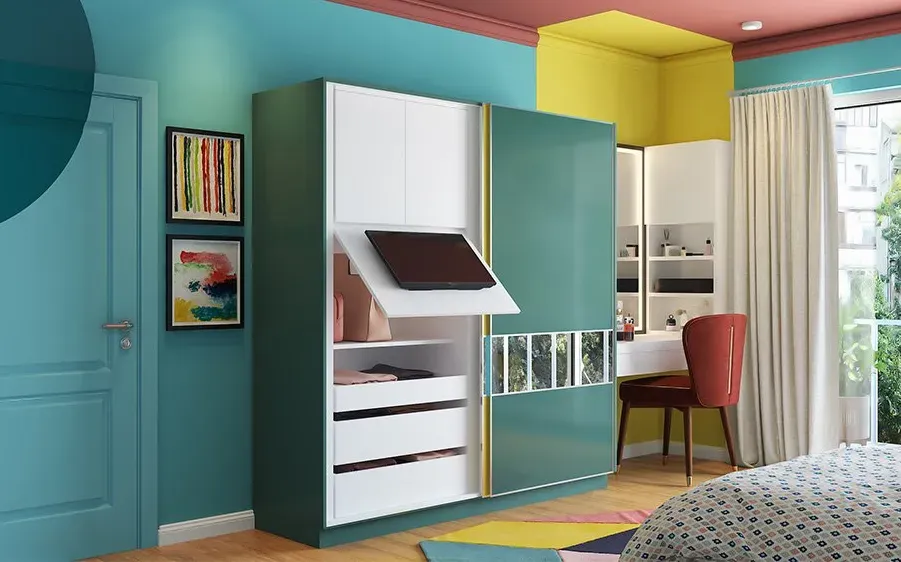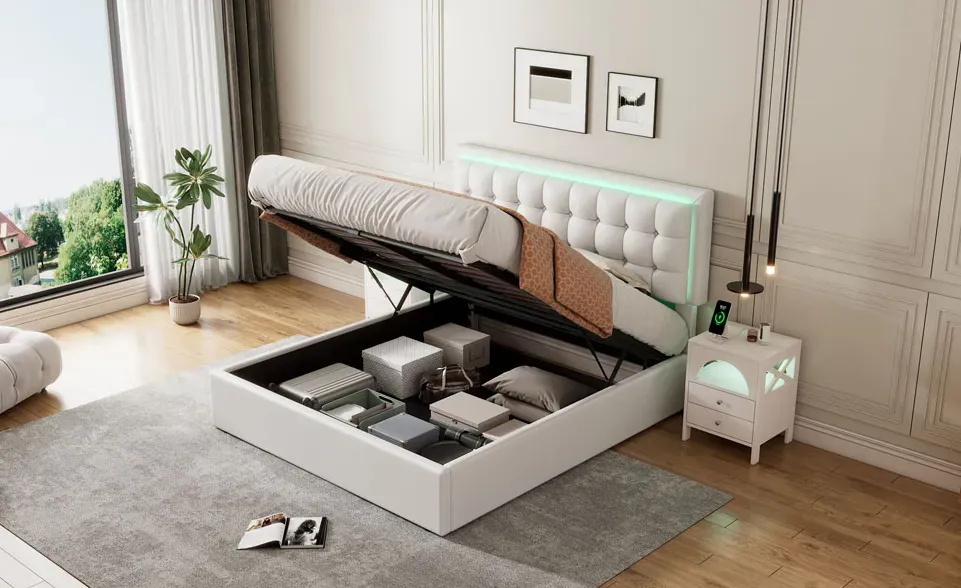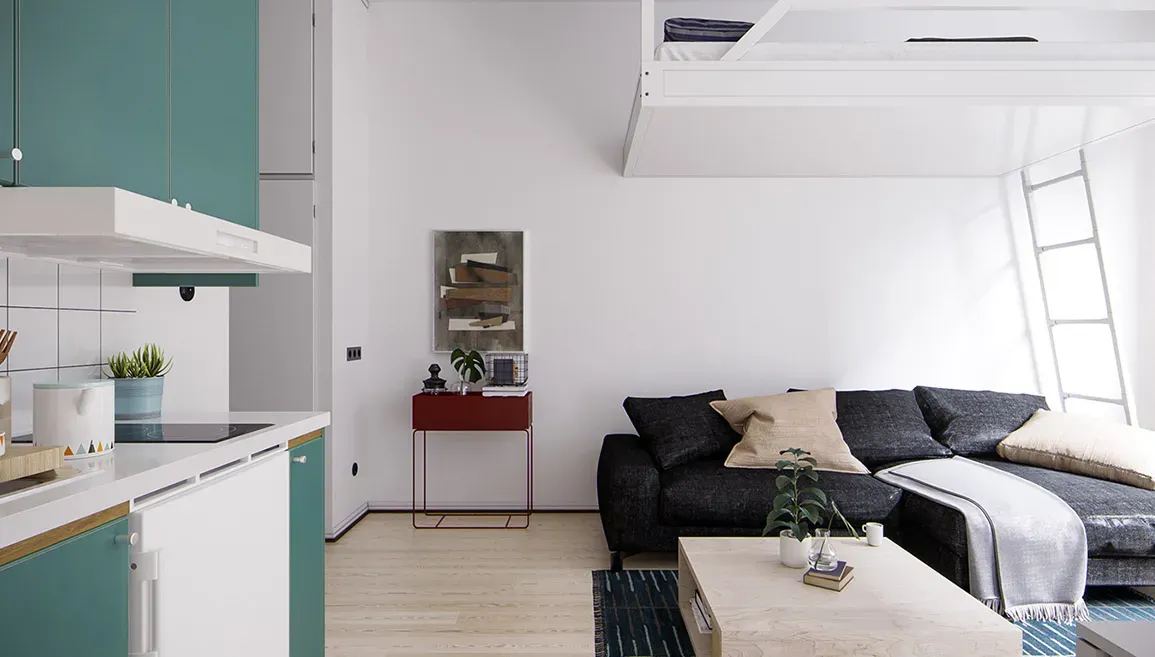Furniture Layouts That Maximize Space in Compact Homes

By
Shrusti Naik
Posted on June 10, 2025. 10 mins

Furniture Layouts That Maximize Space in Compact Homes

In today’s urban living scenario, where space is often at a premium, maximizing the functionality and aesthetic appeal of compact homes is more important than ever. Whether you’re living in a small apartment or a cosy studio, smart furniture layouts can make a significant difference in how spacious and comfortable your home feels. In this article, we will explore various furniture layouts and design tips that can help you make the most of your compact living space.
1. Embrace Open-Concept Layouts
One of the most effective ways to make a small space feel larger is to eliminate unnecessary walls and embrace an open-concept layout. By creating a seamless flow between living, dining, and kitchen areas, you allow natural light to circulate more freely, making the space feel airier and more expansive. Open layouts also create flexibility in how a space is used, allowing one area to serve multiple functions depending on the homeowner’s needs. Here's a guide that tells you what to Do (and Avoid) Room-by-Room if you are Designing Your First Home
2. Utilize Vertical Space
When square footage is limited, think vertically. Tall ceilings, even in small rooms, can give a space a grander feel, and using the height to your advantage is crucial. Consider incorporating floor-to-ceiling shelving, cabinets, and storage units to make the most of vertical space. This not only helps keep the room organized but also frees up floor space for furniture and movement.
3. Choose Multifunctional Furniture
Furniture selection plays a significant role in how a small space functions. When space is limited, every piece of furniture should serve more than one purpose. Look for items that provide hidden storage or can be easily transformed to serve different needs. Sofas that convert into beds, coffee tables that double as storage chests, or extendable dining tables are all great examples of multifunctional furniture. Additionally, foldable or modular furniture allows homeowners to adapt their space to different occasions, from entertaining guests to day-to-day living. With all this, here is another way to enhance your home by Choosing the Right Color Palette for Each Room
4. Incorporate Reflective Surfaces
Reflective surfaces can work wonders in compact spaces by creating the illusion of depth and openness. Strategically placing mirrors across from windows or light sources helps bounce light around the room, making it feel brighter and more spacious. Glass furniture, such as transparent tables or acrylic chairs, can also create a lighter, less cluttered appearance. These elements make the room feel less confined by reducing visual barriers.
5. Maximize Natural Light
Natural light is one of the most effective tools for making a small space feel larger. Ensure that windows are unobstructed by heavy curtains or bulky furniture. Instead, opt for sheer curtains or shades that allow sunlight to filter through while still providing privacy. Skylights or light tunnels can also be integrated into architectural designs for areas where windows are not possible, such as bathrooms or hallways. By bringing in more natural light, even the smallest rooms can feel open and airy. You’ll Actually Want to Live With](https://jugyah.com/blogs/lifestyle/2025-home-designs) where you can include all these safety measures smoothly.
6. Use Light Colours and Neutral Tones
Lighter colours tend to make rooms feel larger and more open. Whites, soft greys, and pastels reflect more light than darker tones, giving the illusion of extra space. That doesn’t mean small spaces have to be bland, though. Accent walls, vibrant art, and bold décor can still be incorporated, but keeping the overall palette light will ensure the room feels more spacious.
7. Opt for Compact and Streamlined Furniture
When choosing furniture for a compact home, opt for pieces that are compact and streamlined. This includes armless dining chairs, bistro-style dining tables, and slim rolling carts. These pieces take up less visual space and create a more streamlined look, making the room feel larger and more open. Besides. here are some Design Choices That Can Actually Increase Your Property Value
8. Create Zones with Furniture and Décor
One room can serve many purposes. By using rugs, lighting, mirrors, and furniture placement, you can divide a single space into functional zones—such as a reading nook, workspace, and lounge area. This technique helps small spaces feel layered and intentional. For example, placing a rug under your seating area or dining table can create a sense of separation for different activities.
9. Add Storage with Stylish Cabinets or Dressers
Lack of storage can be a common issue in small homes. Kristen from Redesign Daily suggests bringing in a thrifted cabinet or dresser to store appliances, dishes, or even use as a coffee station. Just make sure it’s a closed storage piece that complements your design, a charming and functional addition without adding visual clutter. Also check out this blog: Why You Should Track Your Expenses & How to Do It Easily
10. Utilize the Space Beneath Your Furniture
Don’t let the area under your bed, sofa, or tables go to waste. Add rolling bins, baskets, or slim drawers to store seasonal items, shoes, or blankets. Even under-console storage can offer hidden functionality, like a spot for extra seating or quick-access essentials.
Conclusion

Maximizing space in a compact home is not just about making the most of the available square footage; it's about creating a living environment that feels inviting, functional, and spacious. By embracing open-concept layouts, utilizing vertical space, choosing multifunctional furniture, and incorporating reflective surfaces, you can significantly enhance the feel and functionality of your home. Additionally, maximizing natural light, using light colours, and opting for compact and streamlined furniture can make even the smallest spaces feel more open and airy. In a country like India, where urban living spaces are often limited, these design strategies are not just beneficial, they are essential. According to a recent report by JLL India, the demand for compact and well-designed homes is on the rise, driven by the need for efficient use of space and the desire for functional living environments. By implementing these tips, you can transform your compact home into a sanctuary that meets your needs without compromising on style or comfort. Remember, the key to successful space maximization lies in thoughtful planning and innovative solutions. Whether you're designing a new home or looking to revamp your existing space, consider each piece of furniture and décor as an opportunity to enhance functionality and aesthetics. With the right approach, even the smallest homes can feel like a spacious and welcoming retreat. For those in pursuit of their dream home, investment opportunities, or a sanctuary to call their own, Jugyah provides top housing solutions with its intelligent technology.
FAQs
1. What is the best way to maximize space in a small living room?
The best way to maximize space in a small living room is to embrace an open-concept layout, utilize vertical space, and choose multifunctional furniture. Additionally, incorporating reflective surfaces and maximizing natural light can make the room feel larger and more open.
2. How can I make my small apartment feel more spacious?
To make your small apartment feel more spacious, consider using light colours and neutral tones, opting for compact and streamlined furniture, and creating zones with furniture and décor. Utilizing vertical storage solutions and maximizing natural light can also significantly enhance the sense of space.
3. What type of furniture should I choose for a compact home?
For a compact home, choose furniture that is multifunctional, compact, and streamlined. This includes items like sofas that convert into beds, coffee tables with storage, and foldable or modular furniture. These pieces provide functionality without taking up excessive space.
4. How can I add storage to my small home without cluttering the space?
To add storage to your small home without cluttering the space, consider utilizing vertical storage solutions like floor-to-ceiling shelving and wall-mounted cabinets. Additionally, incorporating hidden storage in seating options, such as storage stools or benches, can provide extra storage while maintaining a clutter-free look.
5. What are some tips for maximizing natural light in a small space?
To maximize natural light in a small space, ensure that windows are unobstructed by heavy curtains or bulky furniture. Opt for sheer curtains or shades that allow sunlight to filter through while still providing privacy. Skylights or light tunnels can also be integrated into architectural designs for areas where windows are not possible.